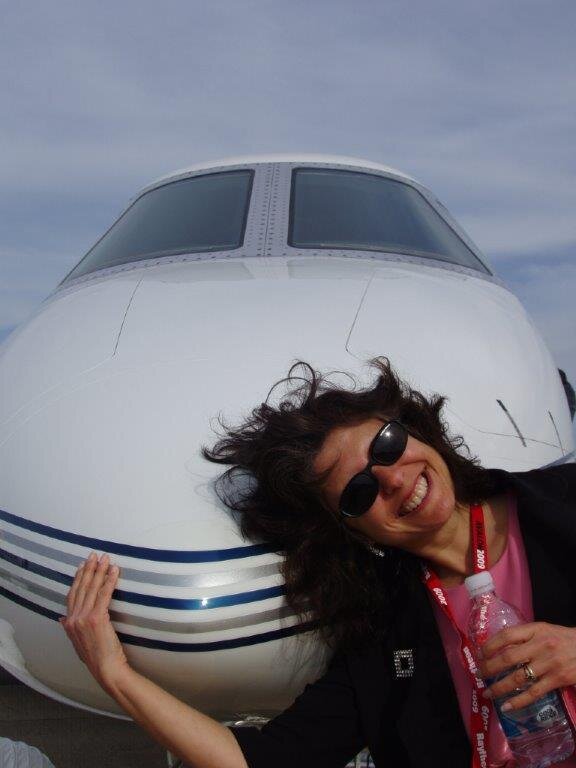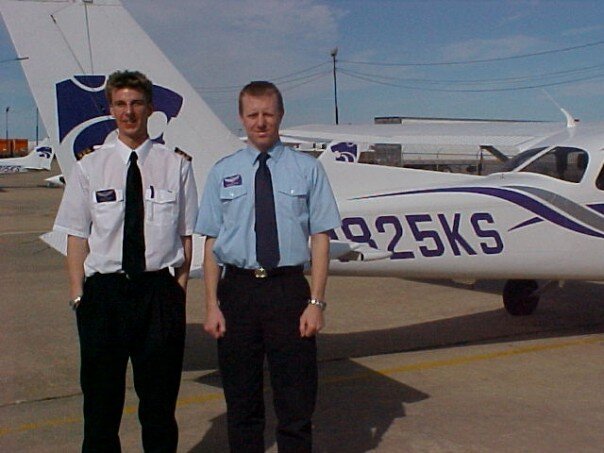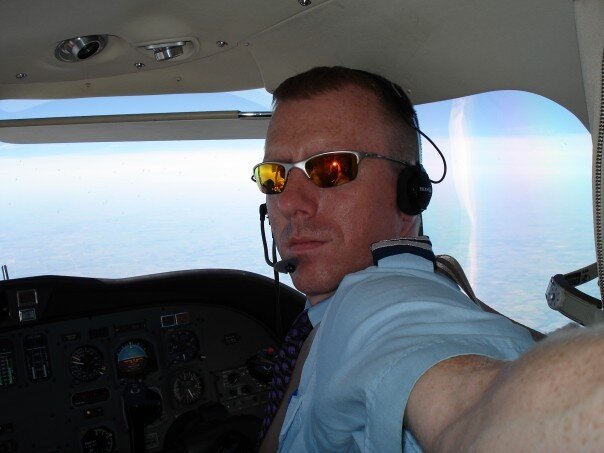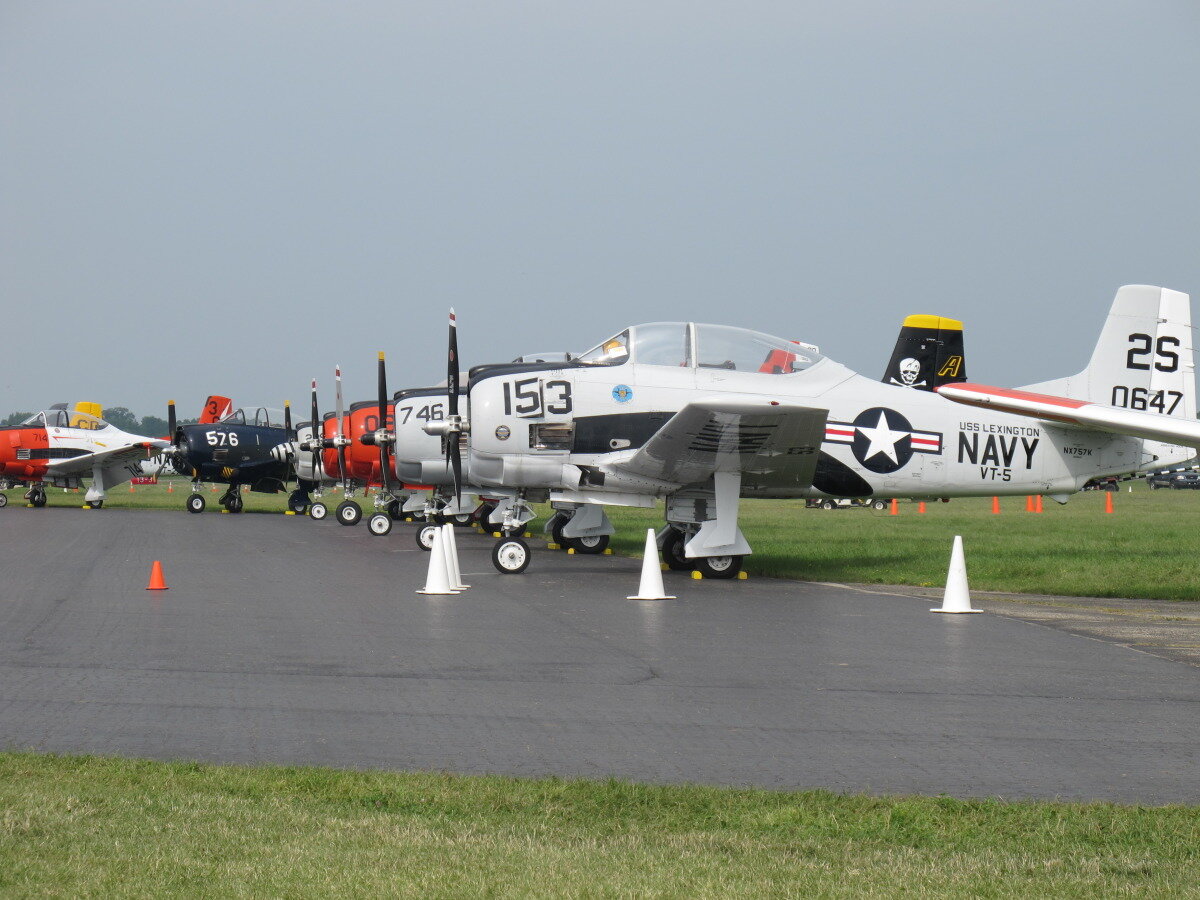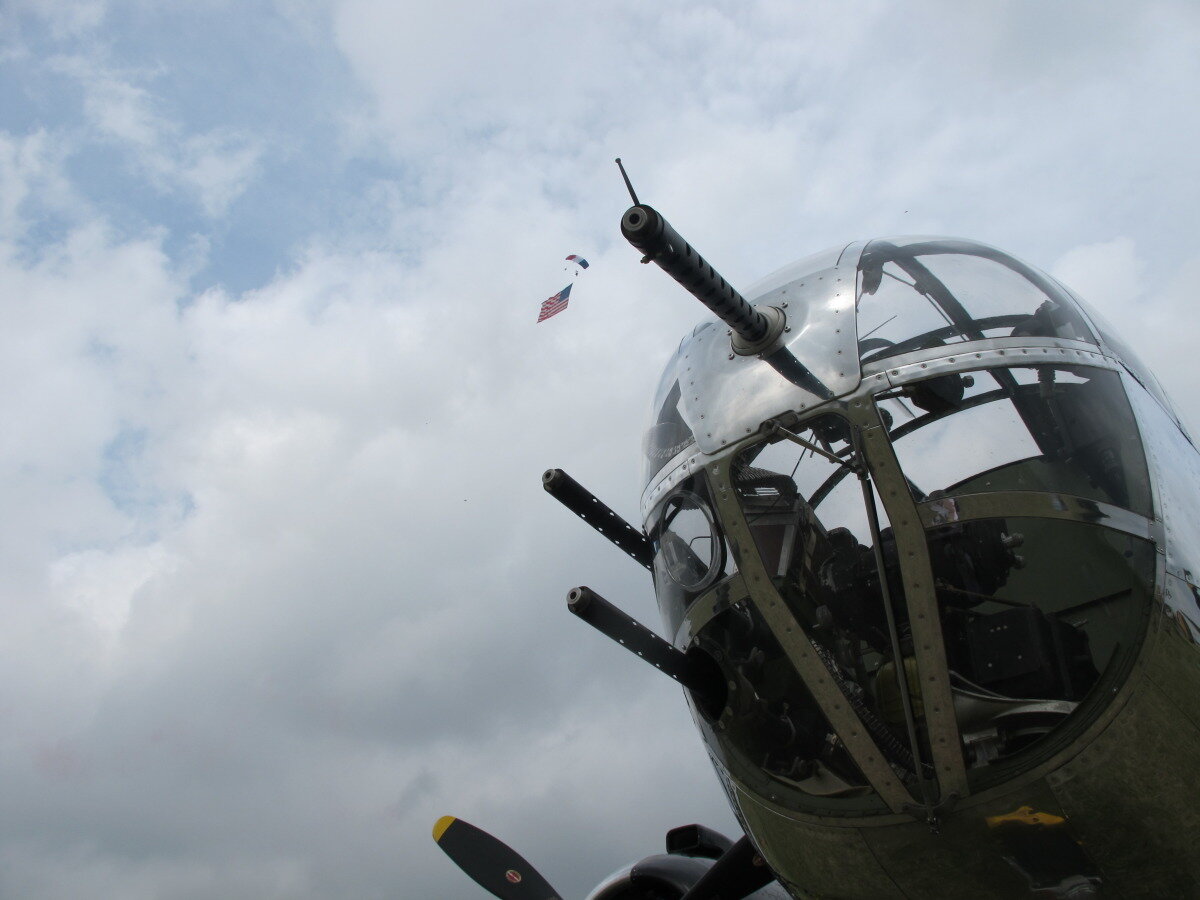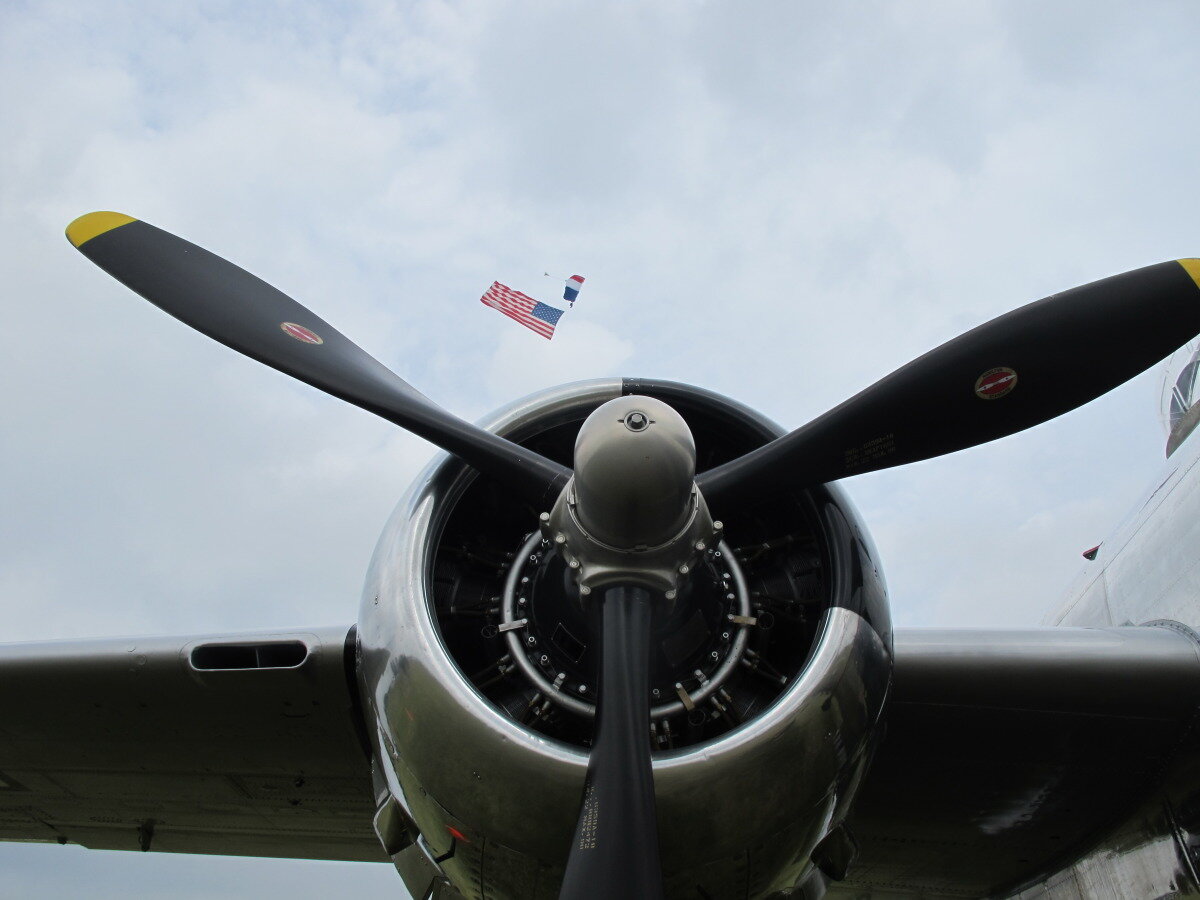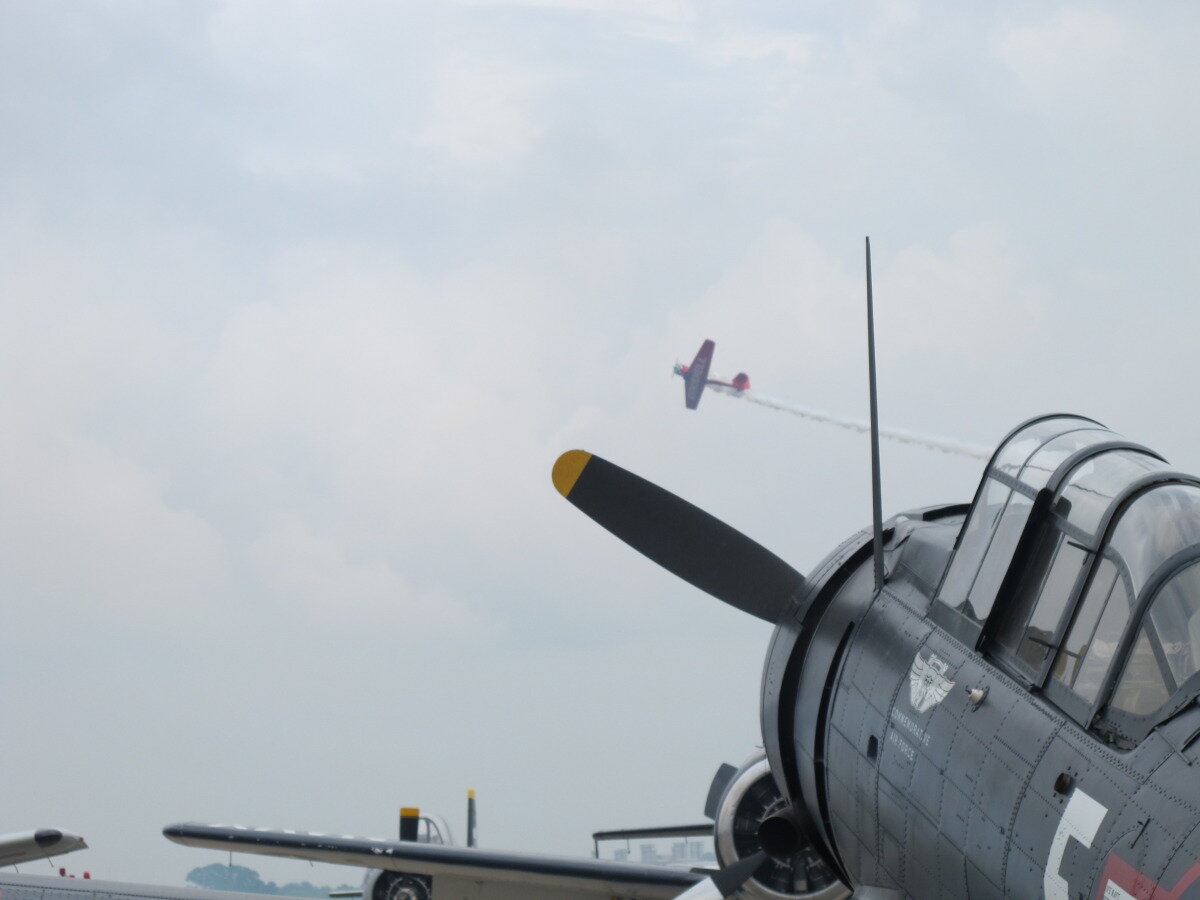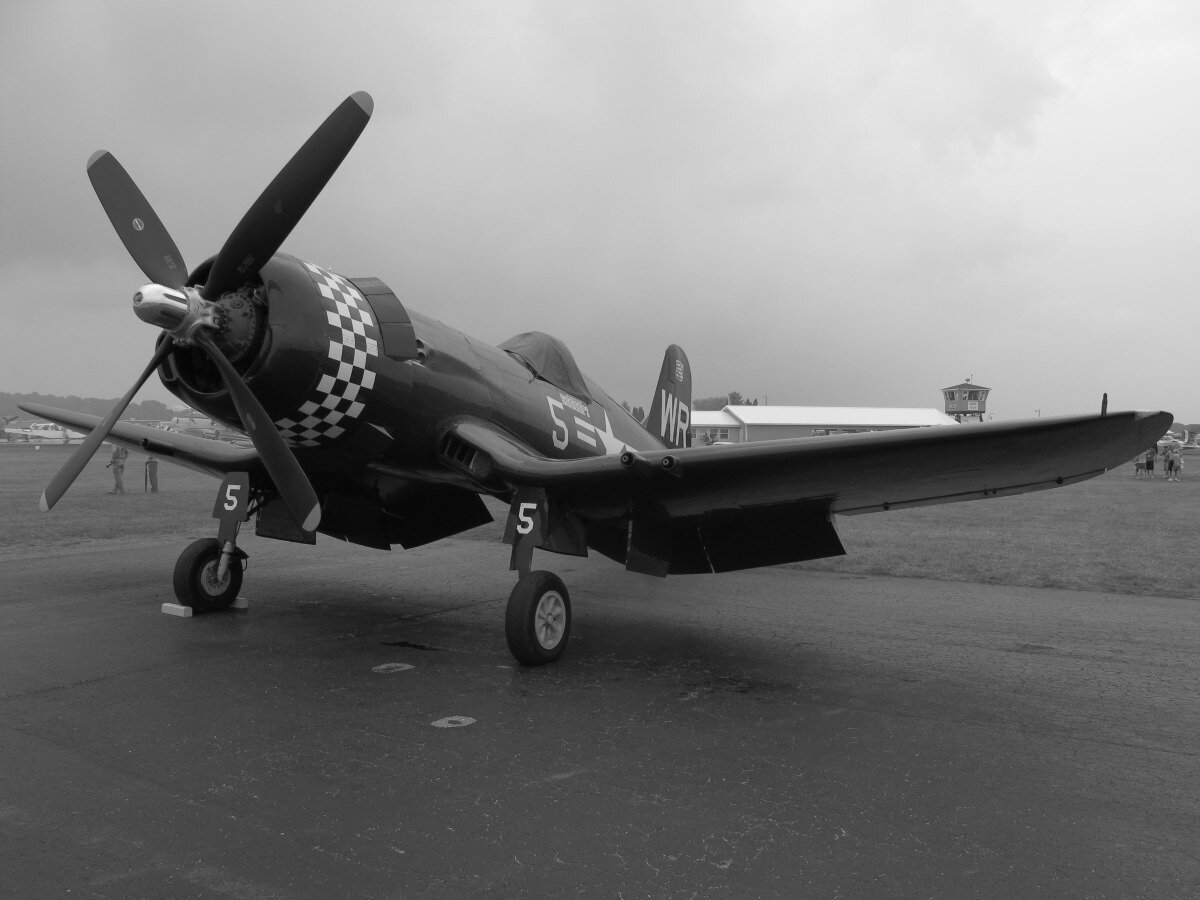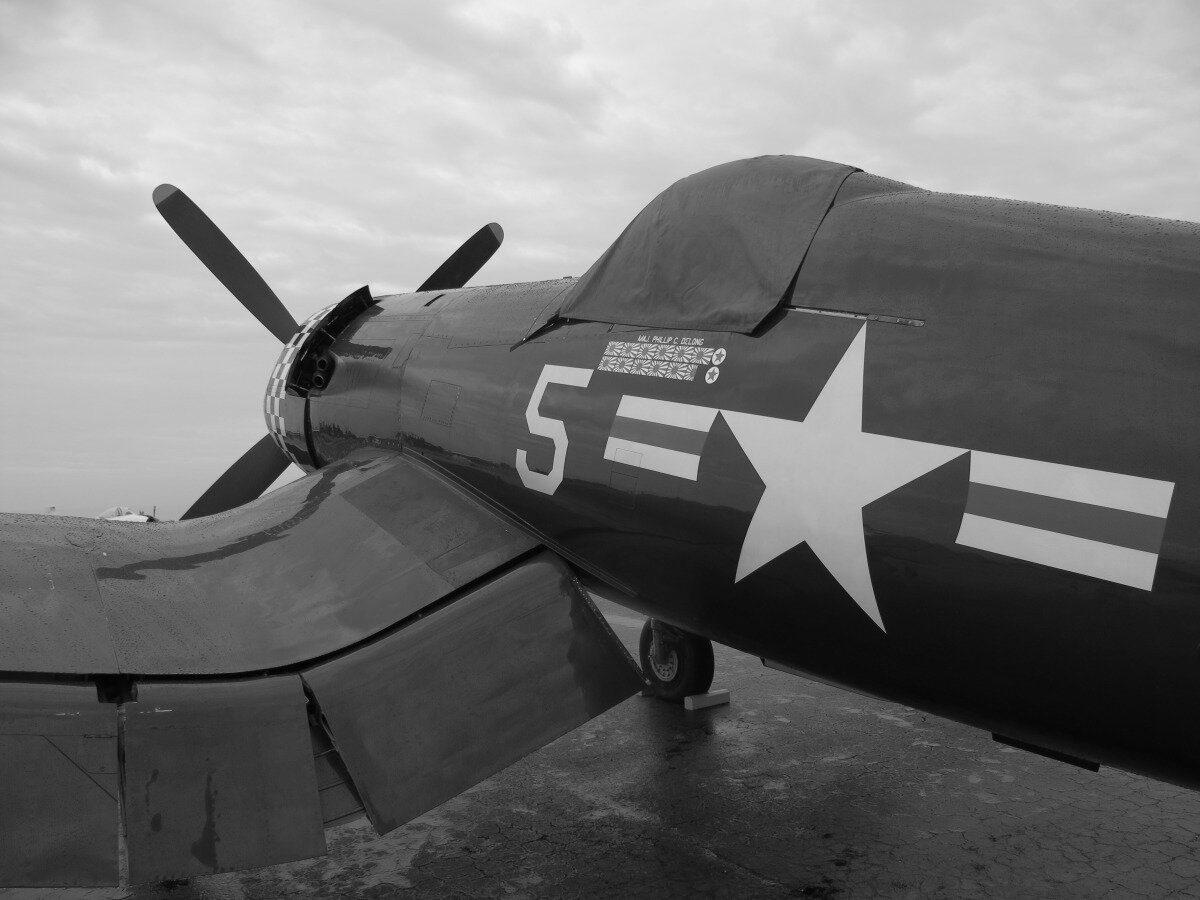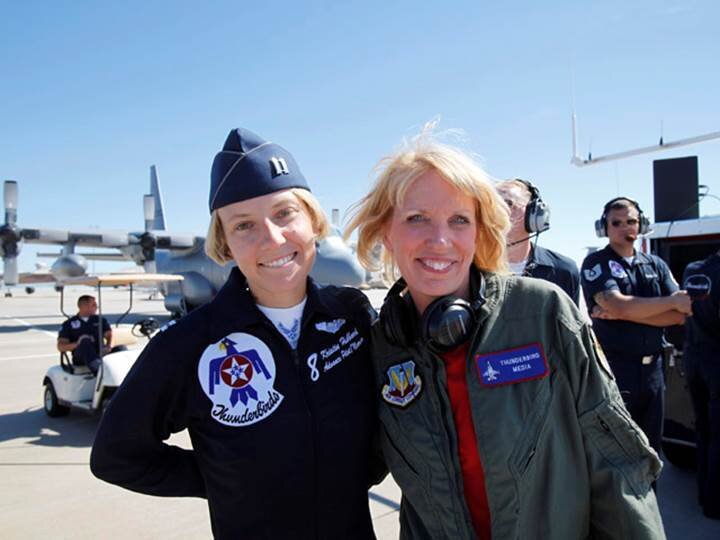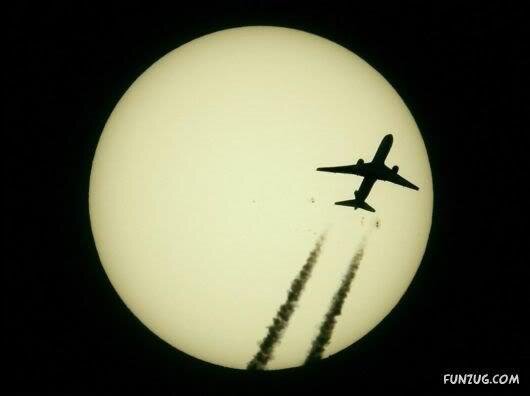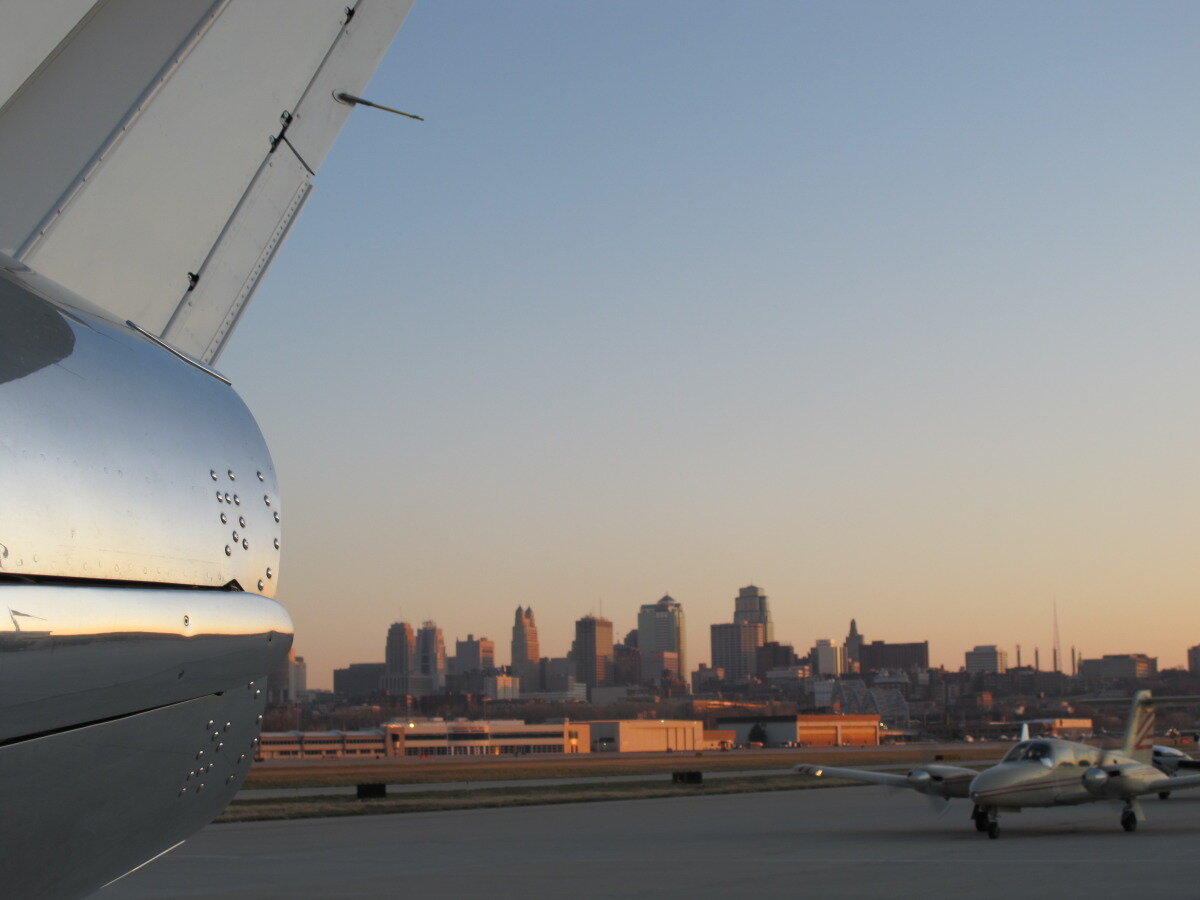Aviation Week Network Celebrates National Aviation Day
/Aviation is special to the AC-U-KWIK staff, of course, as well as everyone else who is a part of the Aviation Week Network.
Inspired by the recognition of National Aviation Day on Aug. 19, we asked our group — including AC-U-KWIK, Air Charter Guide, Aircraft Bluebook, Business & Commercial Aviation, The Weekly of Business Aviation and Airportdata.com — to share favorite photos and stories relate to aviation.
We have chatted up Neil Armstrong, become queasy during vertical rolls in an F-16, posed as "runway models" and done a lot of business with customers and contacts at trade shows.
We'd love to hear from you as well.
Many Small Steps
The first time I saw Neil Armstrong in person was in Bethpage, N.Y., not too long after he, Buzz Aldrin and Michael Collins plopped into the Pacific, ending their historic Apollo 11 moon mission. He and Aldrin had come to Grumman's Long Island "Iron Works" where their lunar module was conceived, designed and built. Then working as a local newspaper reporter, I was excited to witness the visit.
My notes are long gone, but I recall Armstrong telling a sea of employees crowded before him, "When I was in the Navy, we pilots had a saying: A Grumman will get you home. Well, a Grumman brought us home again, and I just wanted to say, 'Thank you.'"
The place went nuts.
A few years later, I was at a small dinner party where Armstrong was the guest of honor. Everyone wanted to hear about his space experiences, and I suppose he shared a few, but what I remember best is that the stories he told most animatedly dealt with his solo X-15 test flights into near space. I remember him saying that on one flight the turbulence was so bad, his helmet kept smashing against the cockpit windows.
The last time I spoke with him was at the first or second European Business Aviation Conference and Exhibition in Geneva, Switzerland. There was a well-attended evening cocktail and canapé gathering in an elaborate edifice on the Rhone River with many large, high-ceilinged rooms. The halls were loud with laughter and conversation and the sound of corks popping. As I wandered about chatting with different groups of attendees, I noticed one fellow standing all by himself, just looking about.
When a few minutes passed and still no one joined him, I went over and introduced myself, mentioning that dinner and one or two other times we'd met. He smiled and said he recalled me and the events, which I didn't believe for a moment, but I appreciated the kindness. Midwestern to the core, his manner was soft spoken, polite and earnest. After chatting a few minutes about the gathering, the city and such, I thanked him, wished him a good show, shook his hand and said I didn't want to take up any more of his time. I went off to another room.
It struck me then, as now, that in the thick of an aviation gathering, how peculiar for one of the most famous and celebrated aviators of all time — indeed, one of the most famous humans to ever have lived — to seemingly go unnoticed, to have no one to talk to, other than me.
–William Garvey, Editor-in-Chief, Business & Commercial Aviation
Rolling with the Thunderbirds
 Thunderbirds pilot Capt. Kristin Hubbard and Molly McMillin, managing editor of The Weekly of Business Aviation, following the Thunderbirds media flight.Covering the aviation industry is one of the best jobs in the world.
Thunderbirds pilot Capt. Kristin Hubbard and Molly McMillin, managing editor of The Weekly of Business Aviation, following the Thunderbirds media flight.Covering the aviation industry is one of the best jobs in the world.
One of the most memorable moments was flying with the U.S. Air Force Thunderbirds. I flew with Thunderbirds pilot Capt. Kristin Hubbard in an F-16 Fighting Falcon. Hubbard, whose call sign is “Mother,” put us through all the aerobatics maneuvers done by the Thunderbirds demonstration team in their breathtaking performances.
Her favorite maneuver is a vertical roll, where we corkscrewed through the air. It was the only maneuver that made me queasy during the hour-long media flight. Hubbard did a graceful barrel loop, a clover leaf and an eight-point roll. We flew upside down and on our side like a knife slicing the air. The aircraft’s canopy gave a spectacular view of the clear Kansas skies and the green fields below.
–Molly McMillin, Managing Editor, The Weekly of Business Aviation
Whirly-Girl No. 31
I graduated from the University of New Mexico in 1955 with a degree in journalism and went to work as a reporter for the Albuquerque Journal. I learned to fly a couple of years later at the original Cutter Flying Service (the company is still in existence, now headquartered in Phoenix). In 1959 I came to Washington as a research assistant to Sen. Clinton P. Anderson, who among other things was chairman of the Joint Committee on Atomic Energy, and I still have a plastic model of the original nuclear submarine, the Nautilus, given to me by Admiral Rickover.
Capitol Hill was not my bag, and at the beginning of 1960 I went to work for Wayne W. Parrish’s American Aviation Publications as a reporter on Aviation Daily in a building at Vermont and K. AAP had a lot of properties, including the Official Airline Guides, the World Aviation Directory, and magazines Air Cargo, Missiles and Rockets, Skyways and Airlift, of which Joe Murphy was the editor. Shortly after joining AAP I met Jean Ross Howard, who decided I should become a helicopter pilot and arranged for me to obtain a helicopter license at Aetna Helicopters at the base of Mount Shasta (wonderful experience), so I became Whirly-Girl No. 31 in April 1960 and the Daily’s helicopter “expert.” There was a huge and very controversial Army competition in progress for the Light Observation Helicopter, and the report I wrote about it became an eight-page special edition of the Daily.
–Danna Henderson, retired aviation journalist and mother of Aviation Week Network Director of Digital Strategy Lisa Ray
Flying for Peanuts
I remember purchasing $29 one-way fares on Southwest Airlines for flights between St. Louis and Chicago during my freshman year of college.
Twenty-nine. Dollars. Unthinkable today.
Including the shuttle rides between mid-Missouri and Lambert St. Louis International Airport, I could pop into the Chicago area via Midway Airport for Labor Day weekend or other weekend visits for the cost of a few concert tickets and a month's worth of pizza.
Because I was the first of my generation of cousins to go to school out of state, these weekends of face time were important for my large, yet close, family. I was able to prove to my parents that their firstborn had survived the first few hot and humid weeks in a non-air-conditioned dorm at the University of Missouri.
I don't know how Southwest did it. Well, I think I had downloaded its little computer desktop deal application called DING! that published special sale fares. More importantly, I think Southwest had kept its fuel costs down due to some dazzling fuel hedging in the '90s.
How Southwest competed and differentiated itself in the commercial aviation business at that time allowed me to get the closest I have ever come to Star Trek-style teleportation.
–Justin Marciniak, Product Manager, Aviation Week Network
GE Aviation Celebrates #NationalAviationDay
Aviationweek.com posted a video of aviation memories compiled by GE Aviation and is collecting readers' thoughts in the comments.

